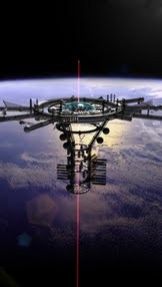Missed future predictions as of 2011

The year 2011 was envisioned by many futurologists in the last 100 years to be full of jumpsuits, electronic cars and mobile satellite phones. While some of them came true, many others were not even past their successful trials. Here are some predictions made by futurologists in the last 100 years and how they far they have been materialized:
Fred Hoyle in his 1972 children's book, 2010: Living in the Future predicted that people would be wearing jumpsuits but as of 2011, only one successful trial of similar experiment was done and it was still under scrutiny as a successful future mode of individual transportation.
But Hoyle's 3-day week work norm for 2010 with mechanization coming handy also went bust. Now people are virtually connected throughout the week and work for more hours and unemployment has become the biggest threat in many advanced countries. However, his vision phone concept has come true.
Another novelist David Brin, in his 1989 novel Earth predicted about citizen reporters, and personalized web interfaces to be dominating the future which, of course, came true in less than 20 years and another warning from him that the individual privacy would decline is a starking reality with hackers on prowl all over the web world.
In 1931, to celebrate its 80th anniversary, the New York Times invited prominent men to make predictions of what life would be in 2011. Some predictions were realistic enough. William Mayo predicted a lifespan running beyond 70 years which is true owing to advanced technology in health care now.
His other prediction of erosion of national boundaries is evident with globalization and social networking sites connecting people across boundaries instantly and even helping bring down authoritarian regimes in Egypt and Yemen.
Above all, science fiction writer Arthur C. Clarke's predictions came true in many cases. He visualized a network of satellites in geostationary orbits came true much before the end of the 20th century. His top prediction of space elevator linking Earth to objects in geostationary orbit is halfway through with success in carbon nanotubes which have raised the possibility of developing a tether strong enough to connect a ship to Earth.
Clarke's other predictions on atomic travel space triggered research by NASA on Jimo (Jupiter Icy Moons Orbiter) but the project was abandoned mid-way while his prediction for earthquake prevention too failed to take off.
Now that 2011 is very much here, may be we have to look for more predictions for the next 100 years.
© Copyright IBTimes 2025. All rights reserved.





















